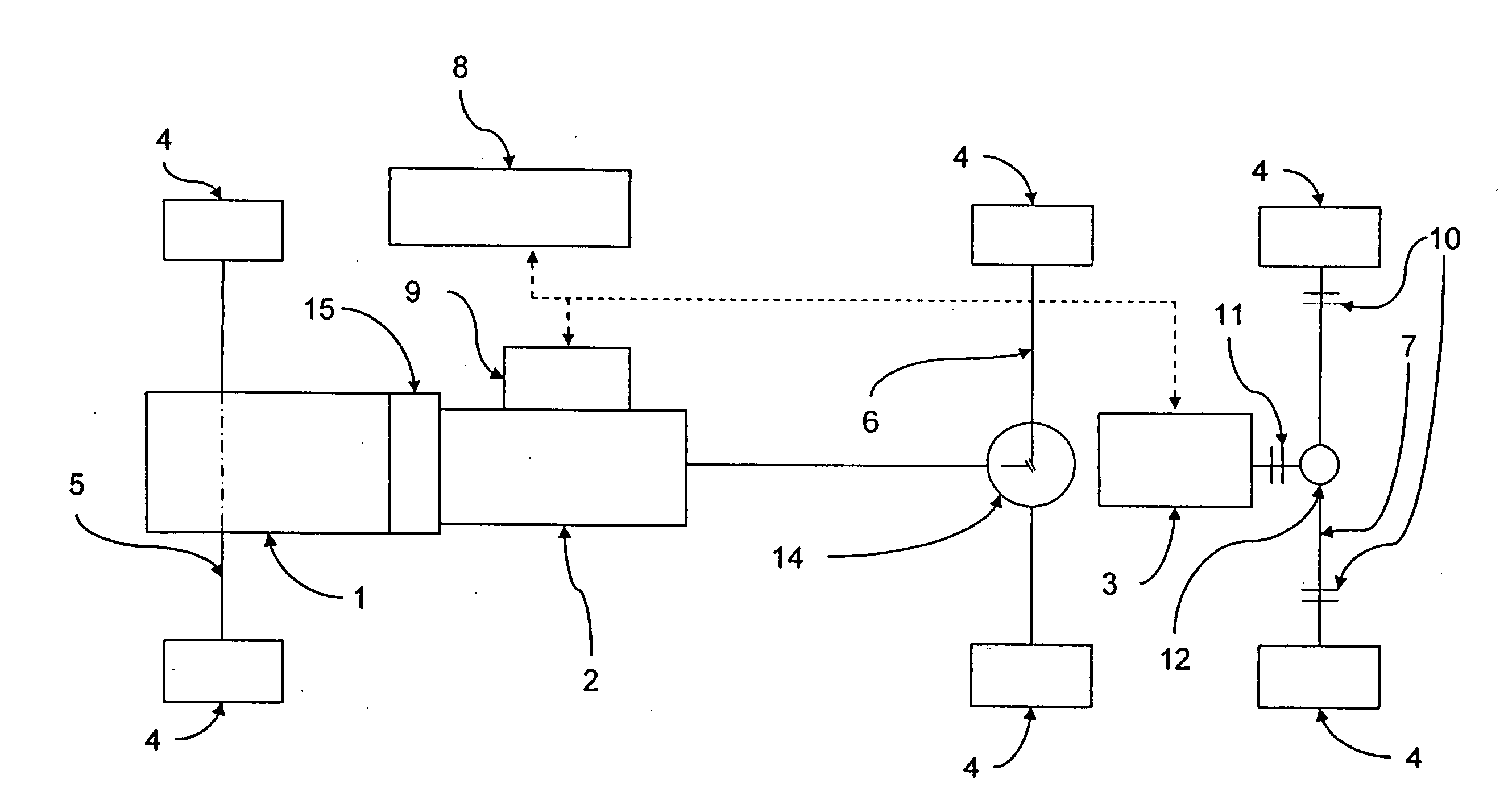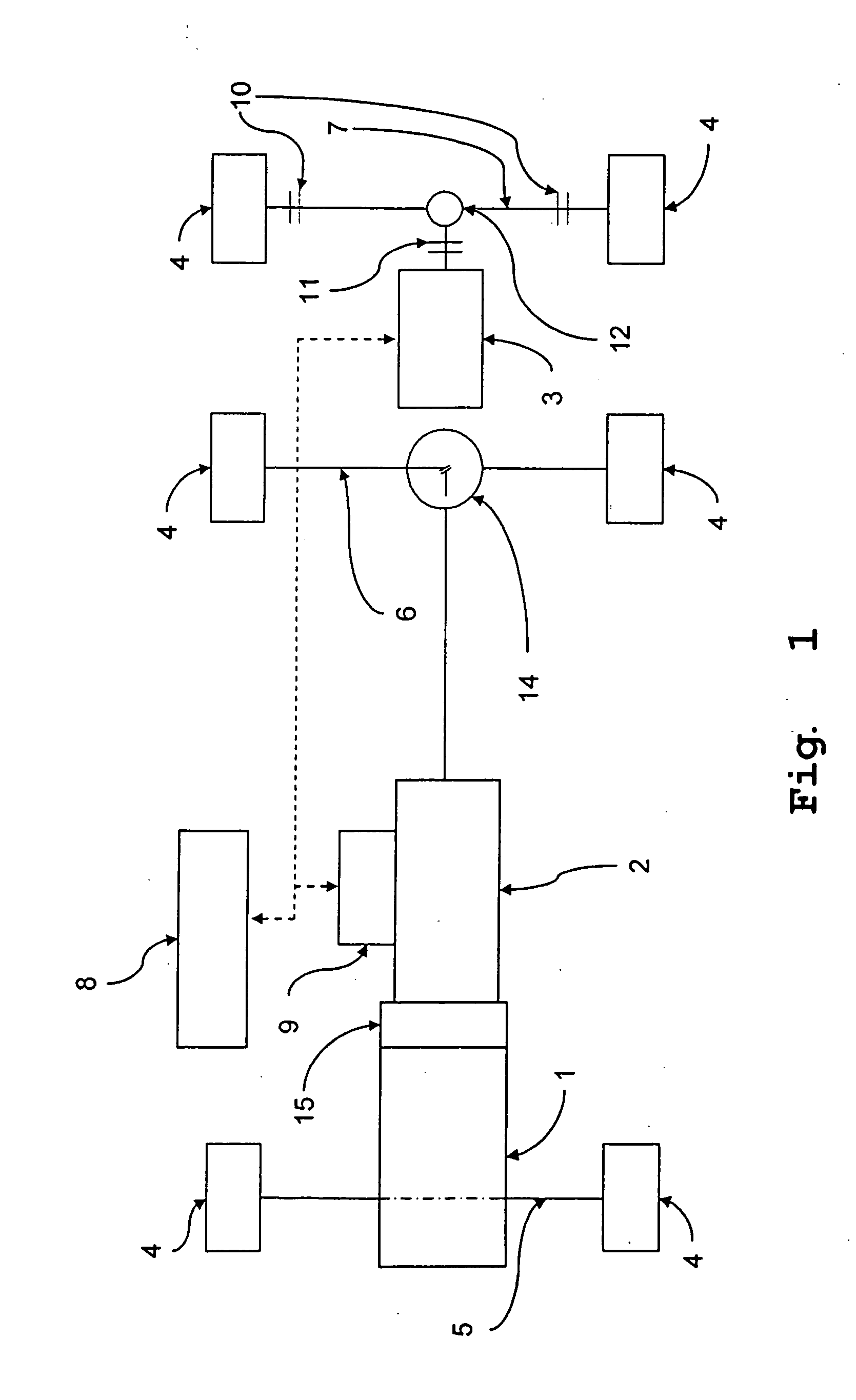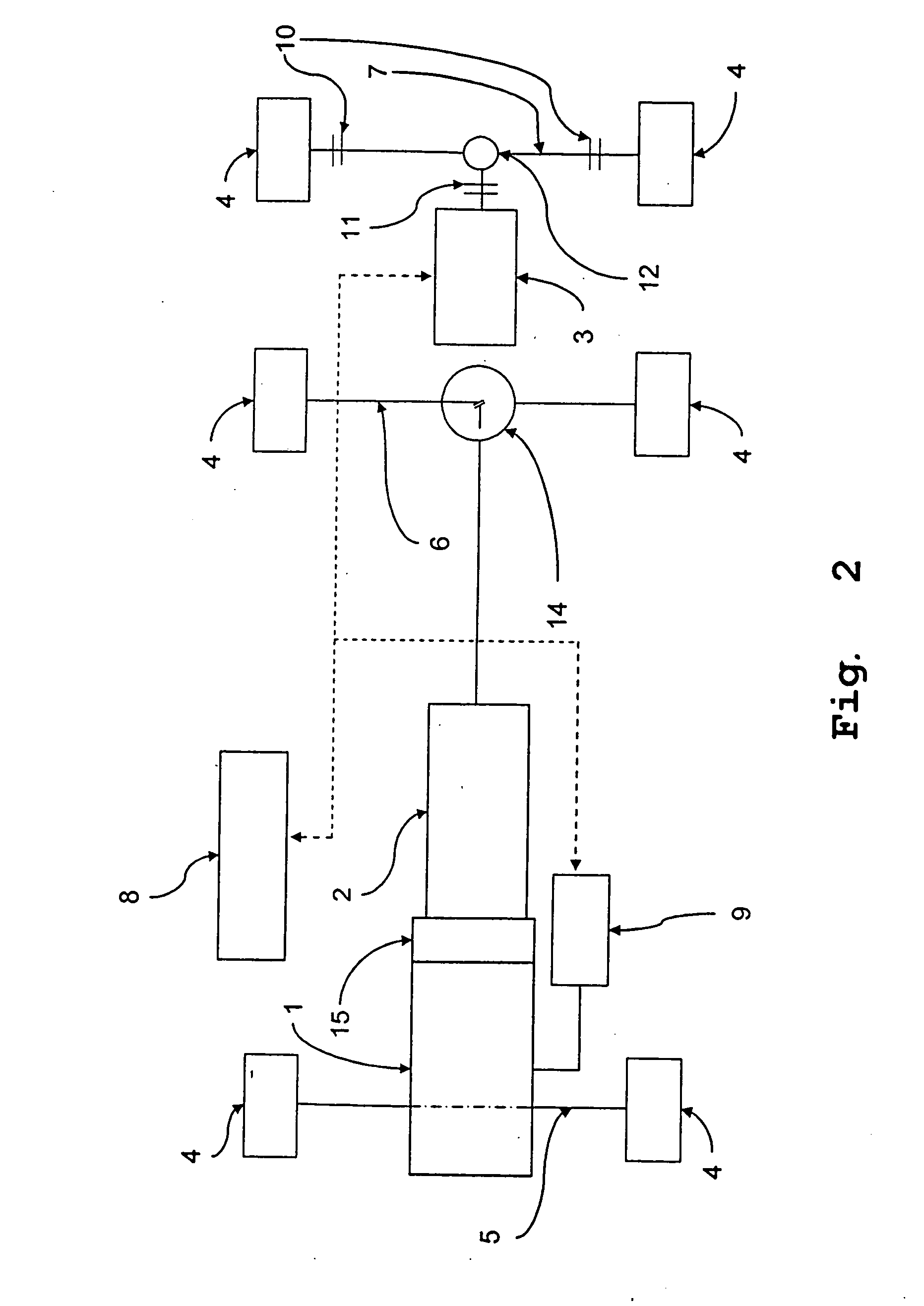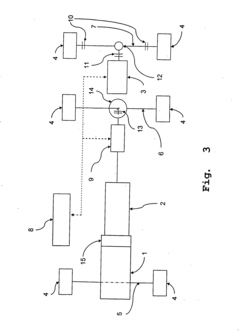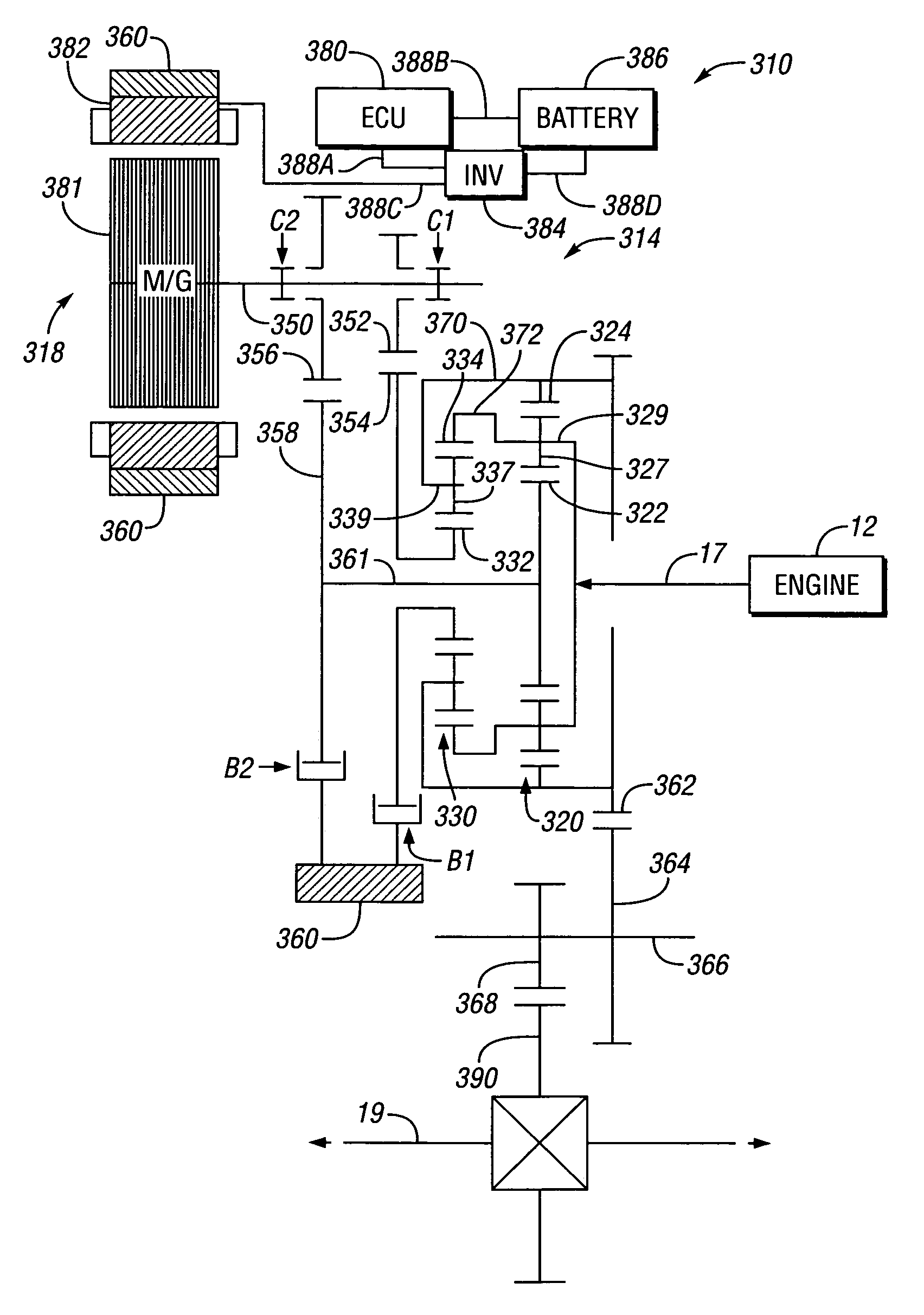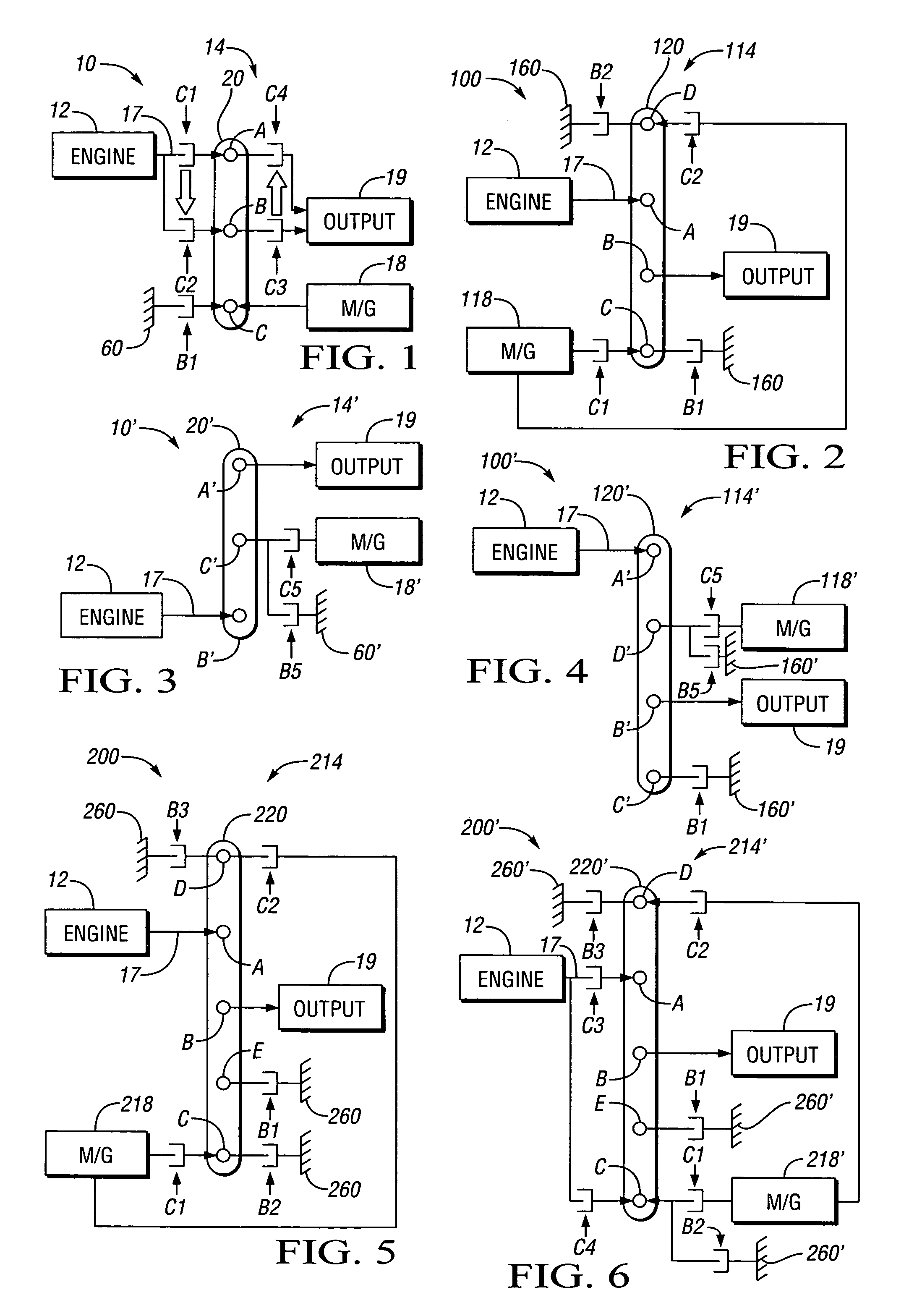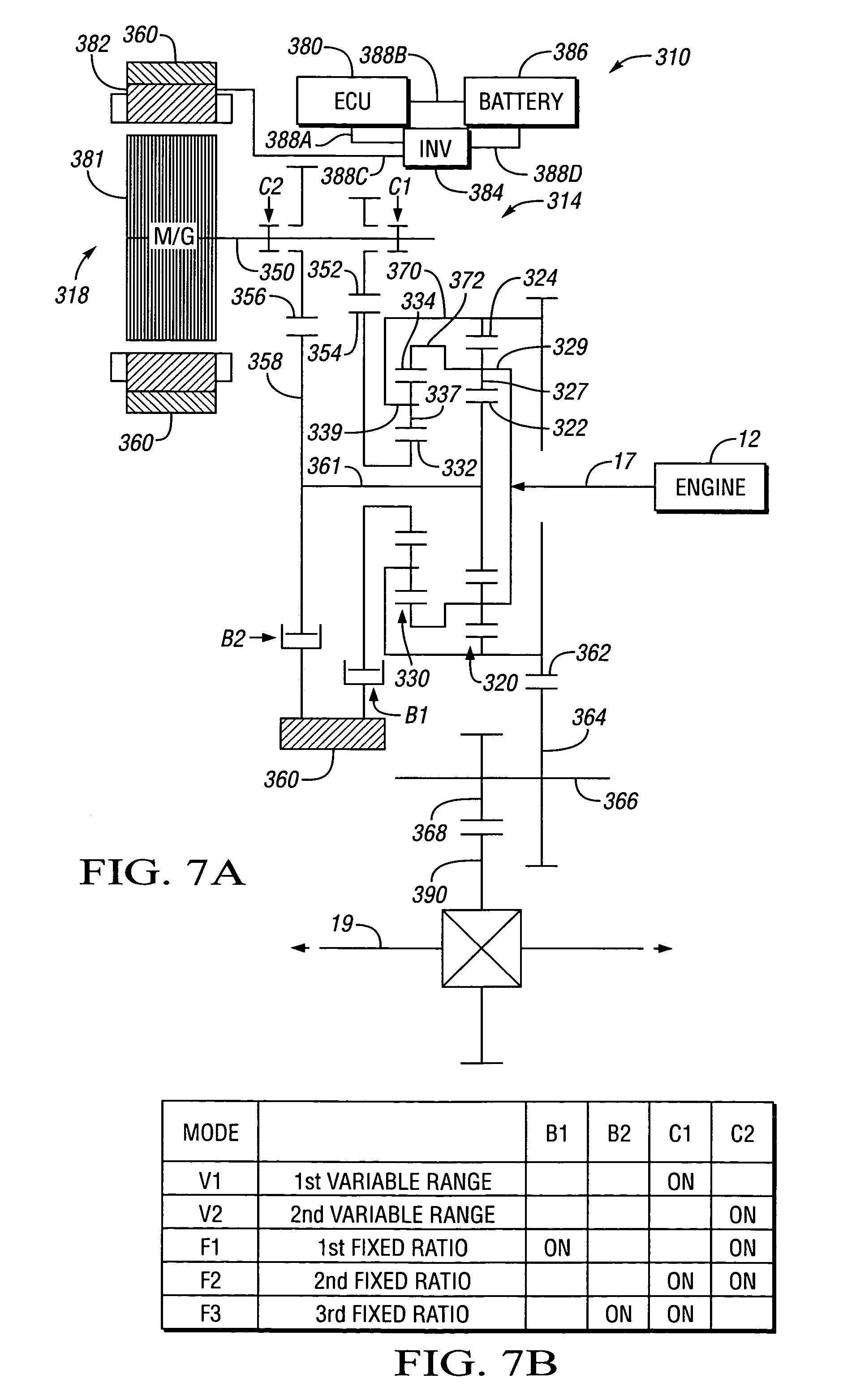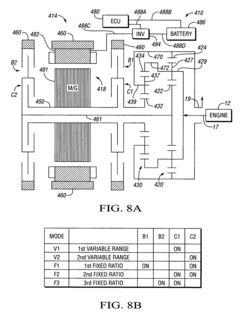How induction motors influence new public transportation models
AUG 18, 20259 MIN READ
Generate Your Research Report Instantly with AI Agent
Patsnap Eureka helps you evaluate technical feasibility & market potential.
Induction Motor Evolution in Transit
The evolution of induction motors in public transportation has been a significant driver of innovation in transit systems. Initially developed in the late 19th century, induction motors have undergone substantial improvements, leading to their widespread adoption in various modes of public transport.
In the early stages, induction motors were primarily used in electric trams and trolleybuses. These early applications demonstrated the potential of electric propulsion in urban transportation, offering cleaner and more efficient alternatives to steam-powered vehicles. As technology advanced, induction motors found their way into subway systems, revolutionizing underground transportation in major cities worldwide.
The mid-20th century saw a shift towards diesel-electric locomotives in long-distance rail transport. While not purely electric, these hybrid systems incorporated induction motors as generators, improving overall efficiency and power delivery. This period marked a transitional phase in the evolution of induction motors in transit applications.
A significant leap forward came with the development of variable frequency drives (VFDs) in the 1970s. VFDs allowed for precise control of motor speed and torque, greatly enhancing the performance and efficiency of induction motors in transit applications. This technology enabled smoother acceleration, regenerative braking, and improved energy management in electric trains and trams.
The late 20th and early 21st centuries witnessed a renewed focus on fully electric transportation solutions. Advanced induction motor designs, coupled with sophisticated power electronics and control systems, led to the development of high-performance electric buses and light rail vehicles. These modern systems offer improved energy efficiency, reduced maintenance requirements, and lower operational costs compared to their fossil fuel-powered counterparts.
Recent years have seen the integration of induction motors with emerging technologies such as energy storage systems and smart grid infrastructure. This convergence has given rise to new public transportation models, including electric bus rapid transit (BRT) systems and on-demand electric shuttle services. These innovations leverage the reliability and efficiency of induction motors while addressing the need for flexible and sustainable urban mobility solutions.
The ongoing evolution of induction motors continues to shape the future of public transportation. Current research focuses on further improving motor efficiency, reducing weight, and enhancing power density. These advancements are crucial for the development of next-generation electric vehicles and the expansion of electrified public transit networks.
In the early stages, induction motors were primarily used in electric trams and trolleybuses. These early applications demonstrated the potential of electric propulsion in urban transportation, offering cleaner and more efficient alternatives to steam-powered vehicles. As technology advanced, induction motors found their way into subway systems, revolutionizing underground transportation in major cities worldwide.
The mid-20th century saw a shift towards diesel-electric locomotives in long-distance rail transport. While not purely electric, these hybrid systems incorporated induction motors as generators, improving overall efficiency and power delivery. This period marked a transitional phase in the evolution of induction motors in transit applications.
A significant leap forward came with the development of variable frequency drives (VFDs) in the 1970s. VFDs allowed for precise control of motor speed and torque, greatly enhancing the performance and efficiency of induction motors in transit applications. This technology enabled smoother acceleration, regenerative braking, and improved energy management in electric trains and trams.
The late 20th and early 21st centuries witnessed a renewed focus on fully electric transportation solutions. Advanced induction motor designs, coupled with sophisticated power electronics and control systems, led to the development of high-performance electric buses and light rail vehicles. These modern systems offer improved energy efficiency, reduced maintenance requirements, and lower operational costs compared to their fossil fuel-powered counterparts.
Recent years have seen the integration of induction motors with emerging technologies such as energy storage systems and smart grid infrastructure. This convergence has given rise to new public transportation models, including electric bus rapid transit (BRT) systems and on-demand electric shuttle services. These innovations leverage the reliability and efficiency of induction motors while addressing the need for flexible and sustainable urban mobility solutions.
The ongoing evolution of induction motors continues to shape the future of public transportation. Current research focuses on further improving motor efficiency, reducing weight, and enhancing power density. These advancements are crucial for the development of next-generation electric vehicles and the expansion of electrified public transit networks.
Market Demand Analysis
The market demand for induction motors in new public transportation models has been steadily increasing, driven by the global push for sustainable and efficient urban mobility solutions. As cities worldwide grapple with congestion, pollution, and the need for improved public transit systems, induction motors have emerged as a key technology in shaping the future of transportation.
The adoption of electric buses and light rail systems has been a significant driver of market demand for induction motors. These vehicles rely heavily on induction motors for propulsion, offering advantages such as high efficiency, low maintenance requirements, and reduced noise pollution. Major metropolitan areas across Europe, Asia, and North America have been investing heavily in electrifying their bus fleets, creating a substantial market for induction motor manufacturers.
In the rail sector, induction motors have become the preferred choice for many new light rail and metro systems. Their compact design, high power-to-weight ratio, and ability to operate efficiently at various speeds make them ideal for urban rail applications. Countries like China, India, and several European nations have ambitious plans to expand their urban rail networks, further fueling the demand for induction motors.
The market for induction motors in public transportation is also being influenced by the growing trend of shared mobility services. Electric scooters and e-bikes, which often utilize smaller induction motors, have gained popularity in many cities as last-mile transportation solutions. This trend is expected to continue, creating new opportunities for induction motor manufacturers in the micro-mobility segment.
Furthermore, the development of autonomous vehicles for public transportation is creating additional demand for induction motors. These vehicles require precise control and reliable performance, characteristics that induction motors can provide. As pilot projects for autonomous buses and shuttles expand, the market for specialized induction motors in this sector is anticipated to grow.
The market demand is not limited to the motors themselves but extends to the entire ecosystem of components and systems that support their operation. This includes power electronics, control systems, and energy storage solutions, all of which are integral to the effective implementation of induction motor-based transportation systems.
Geographically, the strongest market demand is observed in regions with stringent emissions regulations and well-developed public transportation infrastructures. European countries, particularly those in the Nordic region, have been at the forefront of adopting electric public transportation solutions. In Asia, China's massive investments in electric buses and urban rail systems have created a substantial market for induction motors.
As governments worldwide continue to prioritize sustainable transportation and set ambitious targets for reducing carbon emissions, the market demand for induction motors in public transportation models is expected to maintain its upward trajectory. Industry analysts project a compound annual growth rate of 6-8% for the induction motor market in the transportation sector over the next five years, with public transportation being a key driver of this growth.
The adoption of electric buses and light rail systems has been a significant driver of market demand for induction motors. These vehicles rely heavily on induction motors for propulsion, offering advantages such as high efficiency, low maintenance requirements, and reduced noise pollution. Major metropolitan areas across Europe, Asia, and North America have been investing heavily in electrifying their bus fleets, creating a substantial market for induction motor manufacturers.
In the rail sector, induction motors have become the preferred choice for many new light rail and metro systems. Their compact design, high power-to-weight ratio, and ability to operate efficiently at various speeds make them ideal for urban rail applications. Countries like China, India, and several European nations have ambitious plans to expand their urban rail networks, further fueling the demand for induction motors.
The market for induction motors in public transportation is also being influenced by the growing trend of shared mobility services. Electric scooters and e-bikes, which often utilize smaller induction motors, have gained popularity in many cities as last-mile transportation solutions. This trend is expected to continue, creating new opportunities for induction motor manufacturers in the micro-mobility segment.
Furthermore, the development of autonomous vehicles for public transportation is creating additional demand for induction motors. These vehicles require precise control and reliable performance, characteristics that induction motors can provide. As pilot projects for autonomous buses and shuttles expand, the market for specialized induction motors in this sector is anticipated to grow.
The market demand is not limited to the motors themselves but extends to the entire ecosystem of components and systems that support their operation. This includes power electronics, control systems, and energy storage solutions, all of which are integral to the effective implementation of induction motor-based transportation systems.
Geographically, the strongest market demand is observed in regions with stringent emissions regulations and well-developed public transportation infrastructures. European countries, particularly those in the Nordic region, have been at the forefront of adopting electric public transportation solutions. In Asia, China's massive investments in electric buses and urban rail systems have created a substantial market for induction motors.
As governments worldwide continue to prioritize sustainable transportation and set ambitious targets for reducing carbon emissions, the market demand for induction motors in public transportation models is expected to maintain its upward trajectory. Industry analysts project a compound annual growth rate of 6-8% for the induction motor market in the transportation sector over the next five years, with public transportation being a key driver of this growth.
Technical Challenges
The development of induction motors for public transportation models faces several significant technical challenges. One of the primary issues is the need for increased energy efficiency. As public transportation systems aim to reduce their carbon footprint and operational costs, induction motors must be optimized to consume less energy while maintaining or improving performance. This requires advancements in motor design, materials, and control systems to minimize energy losses and maximize power output.
Another critical challenge is the demand for higher power density. Public transportation vehicles, particularly in urban environments, often have limited space for propulsion systems. Induction motors need to deliver more power in a compact form factor, necessitating innovations in thermal management, magnetic circuit design, and overall motor architecture. This challenge is further complicated by the need to maintain reliability and durability under increased power output conditions.
The integration of induction motors with advanced control systems presents another technical hurdle. Modern public transportation models require precise speed control, smooth acceleration, and efficient regenerative braking. Developing sophisticated control algorithms and power electronics that can fully exploit the capabilities of induction motors while ensuring optimal performance across various operating conditions is a complex task. This includes addressing issues such as flux weakening at high speeds and minimizing torque ripple for passenger comfort.
Durability and maintenance requirements pose additional challenges. Public transportation vehicles operate under demanding conditions, including frequent starts and stops, varying loads, and exposure to environmental factors. Induction motors must be designed to withstand these stresses while minimizing the need for maintenance. This involves improving insulation systems, bearing designs, and overall motor robustness to ensure long service life and reduced downtime.
The adaptation of induction motors to different types of public transportation vehicles also presents technical difficulties. From light rail systems to electric buses, each application has unique requirements in terms of power output, speed range, and integration with vehicle systems. Developing flexible motor designs that can be easily adapted to various platforms while maintaining optimal performance is a significant engineering challenge.
Furthermore, the push towards more sustainable and environmentally friendly transportation solutions introduces the need for motors that are not only efficient in operation but also in their manufacturing and end-of-life processes. This includes challenges in sourcing sustainable materials, designing for recyclability, and reducing the environmental impact of motor production and disposal.
Lastly, the integration of induction motors with emerging technologies such as wireless charging systems and smart grid infrastructure presents new technical challenges. Motors need to be designed to work efficiently with these systems, requiring advancements in electromagnetic compatibility and power management strategies.
Another critical challenge is the demand for higher power density. Public transportation vehicles, particularly in urban environments, often have limited space for propulsion systems. Induction motors need to deliver more power in a compact form factor, necessitating innovations in thermal management, magnetic circuit design, and overall motor architecture. This challenge is further complicated by the need to maintain reliability and durability under increased power output conditions.
The integration of induction motors with advanced control systems presents another technical hurdle. Modern public transportation models require precise speed control, smooth acceleration, and efficient regenerative braking. Developing sophisticated control algorithms and power electronics that can fully exploit the capabilities of induction motors while ensuring optimal performance across various operating conditions is a complex task. This includes addressing issues such as flux weakening at high speeds and minimizing torque ripple for passenger comfort.
Durability and maintenance requirements pose additional challenges. Public transportation vehicles operate under demanding conditions, including frequent starts and stops, varying loads, and exposure to environmental factors. Induction motors must be designed to withstand these stresses while minimizing the need for maintenance. This involves improving insulation systems, bearing designs, and overall motor robustness to ensure long service life and reduced downtime.
The adaptation of induction motors to different types of public transportation vehicles also presents technical difficulties. From light rail systems to electric buses, each application has unique requirements in terms of power output, speed range, and integration with vehicle systems. Developing flexible motor designs that can be easily adapted to various platforms while maintaining optimal performance is a significant engineering challenge.
Furthermore, the push towards more sustainable and environmentally friendly transportation solutions introduces the need for motors that are not only efficient in operation but also in their manufacturing and end-of-life processes. This includes challenges in sourcing sustainable materials, designing for recyclability, and reducing the environmental impact of motor production and disposal.
Lastly, the integration of induction motors with emerging technologies such as wireless charging systems and smart grid infrastructure presents new technical challenges. Motors need to be designed to work efficiently with these systems, requiring advancements in electromagnetic compatibility and power management strategies.
Current Motor Solutions
01 Design and construction of induction motors
This category focuses on the fundamental design and construction aspects of induction motors. It includes innovations in motor structure, winding configurations, and material selection to improve efficiency and performance. These advancements aim to enhance power output, reduce energy losses, and optimize overall motor functionality.- Design and construction of induction motors: This category covers the fundamental design and construction aspects of induction motors, including rotor and stator configurations, winding arrangements, and core materials. Innovations in these areas aim to improve motor efficiency, power output, and overall performance.
- Control systems for induction motors: This point focuses on the development of control systems and methods for induction motors. It includes advancements in speed control, torque regulation, and power factor correction. These control systems aim to enhance motor performance, energy efficiency, and adaptability to various operating conditions.
- Efficiency improvements in induction motors: This category encompasses innovations aimed at improving the energy efficiency of induction motors. It includes advancements in motor design, materials, and manufacturing processes to reduce losses and increase overall efficiency. These improvements contribute to energy savings and reduced operating costs.
- Specialized applications of induction motors: This point covers the adaptation and optimization of induction motors for specific applications. It includes designs tailored for industrial machinery, electric vehicles, renewable energy systems, and other specialized uses. These adaptations often involve modifications to motor characteristics to meet specific performance requirements.
- Maintenance and diagnostics of induction motors: This category focuses on methods and systems for maintaining and diagnosing induction motors. It includes techniques for condition monitoring, fault detection, and predictive maintenance. These innovations aim to improve motor reliability, reduce downtime, and extend the operational life of induction motors.
02 Control systems for induction motors
This point covers various control systems and methods developed for induction motors. It includes advancements in speed control, torque regulation, and power factor correction. These control systems aim to improve motor performance, energy efficiency, and adaptability to different load conditions.Expand Specific Solutions03 Efficiency improvements in induction motors
This category encompasses techniques and innovations aimed at improving the overall efficiency of induction motors. It includes advancements in rotor and stator designs, cooling systems, and loss reduction methods. These improvements contribute to energy savings and enhanced motor performance across various applications.Expand Specific Solutions04 Specialized applications of induction motors
This point focuses on the adaptation and optimization of induction motors for specific applications. It includes designs tailored for industrial machinery, electric vehicles, renewable energy systems, and other specialized uses. These adaptations aim to meet the unique requirements of different sectors and operating conditions.Expand Specific Solutions05 Manufacturing and testing of induction motors
This category covers advancements in manufacturing processes and testing methods for induction motors. It includes innovations in production techniques, quality control measures, and performance evaluation protocols. These developments aim to improve motor reliability, consistency, and compliance with industry standards.Expand Specific Solutions
Key Industry Players
The induction motor technology's influence on new public transportation models is in a growth phase, with increasing market size and evolving technological maturity. Major players like GM Global Technology Operations, Hyundai Mobis, and Siemens AG are driving innovation in this field. Universities such as MIT and Beijing Jiaotong University contribute to research and development. The market is seeing a shift towards electrification, with companies like BYD and LG Magna E-Powertrain focusing on electric powertrain components. This trend is reshaping public transportation, promising more efficient and sustainable urban mobility solutions.
Massachusetts Institute of Technology
Technical Solution: Massachusetts Institute of Technology (MIT) has been at the forefront of research into advanced induction motor technologies and their applications in public transportation. MIT researchers have developed a novel switched reluctance motor design that offers higher efficiency and power density compared to traditional induction motors, potentially revolutionizing electric vehicle propulsion systems[13]. This technology could significantly impact public transportation by enabling longer-range, more efficient electric buses and trains. Additionally, MIT's Laboratory for Aviation and the Environment has conducted extensive studies on the environmental impact of various transportation technologies, including those utilizing induction motors[14]. Their research has shown that widespread adoption of electric buses powered by induction motors could reduce urban NOx emissions by up to 50%[15]. MIT has also been exploring the integration of wireless power transfer technologies with induction motor-driven vehicles, which could enable continuous charging of public transportation vehicles along their routes, potentially eliminating the need for lengthy charging stops[16].
Strengths: Cutting-edge research in motor design, comprehensive environmental impact studies, and exploration of innovative charging technologies. Weaknesses: As an academic institution, MIT's technologies may require further development and commercialization partnerships to be widely implemented in public transportation systems.
Mercedes-Benz Group AG
Technical Solution: Mercedes-Benz Group AG has been at the forefront of integrating induction motors into new public transportation models, particularly in the realm of electric buses. Their eCitaro electric bus utilizes a ZF AVE 130 electric portal axle with two high-performance electric motors near the wheel hubs, each capable of 125 kW peak power[8]. These water-cooled asynchronous motors offer high efficiency and low maintenance requirements. Mercedes-Benz has also developed a modular battery concept for the eCitaro, allowing for flexible configurations to meet different range requirements. The company's commitment to sustainable public transport is further evidenced by their development of the eCitaro G articulated bus, which can be equipped with solid-state batteries, potentially increasing the range up to 220 km[9]. Additionally, Mercedes-Benz is exploring the integration of fuel cell technology with their electric drive systems for even greater range capabilities in public transportation applications.
Strengths: High-performance electric drive systems, modular battery concepts, and exploration of advanced energy storage technologies. Weaknesses: Higher initial costs compared to traditional diesel buses and potential limitations in extreme weather conditions.
Core Innovations
Drive train for a motor vehicle and method of operating a drive train of a motor vehicle
PatentInactiveUS20090321153A1
Innovation
- A drive train system with independent first and second drive axles, equipped with clutch elements that allow for mechanical disconnection between the wheels and drive units, enabling the electric motor and generator to assist the internal combustion engine under optimal conditions, reducing fuel consumption and emissions.
Hybrid electro-mechanical transmission with single motor/generator and method of control
PatentInactiveUS7256510B2
Innovation
- A compact hybrid electro-mechanical transmission system utilizing a single motor/generator with differential gear sets, allowing for synchronous shifting between continuously variable operating modes and achieving reduced costs through elimination of a second motor/generator, while optimizing energy efficiency with battery power management.
Energy Efficiency Impact
Induction motors play a significant role in shaping new public transportation models, particularly in terms of energy efficiency impact. These motors, known for their robustness and reliability, have become integral components in various public transport systems, contributing to improved energy efficiency and reduced environmental impact.
The adoption of induction motors in public transportation has led to substantial improvements in energy consumption patterns. Compared to traditional combustion engines, induction motors offer higher efficiency in converting electrical energy into mechanical power. This efficiency translates into reduced energy losses during operation, resulting in lower overall energy consumption for public transport vehicles.
In electric buses and trains, induction motors have demonstrated their ability to significantly reduce energy waste through regenerative braking systems. When the vehicle decelerates, the motor acts as a generator, converting kinetic energy back into electrical energy. This recovered energy can be stored in batteries or returned to the power grid, further enhancing the overall energy efficiency of the transportation system.
The implementation of induction motors in public transportation has also contributed to the reduction of greenhouse gas emissions. As these motors operate on electricity, which can be generated from renewable sources, they offer a cleaner alternative to fossil fuel-powered vehicles. This shift towards electrification aligns with global efforts to combat climate change and improve air quality in urban areas.
Furthermore, the energy efficiency of induction motors extends beyond their operational phase. These motors require less maintenance compared to internal combustion engines, reducing the energy and resources needed for upkeep. The longer lifespan of induction motors also contributes to sustainability by reducing the frequency of vehicle replacements and associated manufacturing energy costs.
The impact of induction motors on energy efficiency in public transportation is not limited to the vehicles themselves. The integration of these motors has spurred innovations in power distribution and charging infrastructure. Advanced charging stations and smart grid technologies have been developed to optimize energy delivery and management, further enhancing the overall efficiency of public transport systems.
As cities worldwide strive to create more sustainable urban environments, the energy efficiency benefits of induction motors in public transportation are becoming increasingly apparent. The adoption of these motors is driving the development of new transportation models that prioritize energy conservation, reduced emissions, and improved overall system efficiency. This shift is not only transforming the way people move within cities but also contributing to broader goals of sustainable urban development and environmental stewardship.
The adoption of induction motors in public transportation has led to substantial improvements in energy consumption patterns. Compared to traditional combustion engines, induction motors offer higher efficiency in converting electrical energy into mechanical power. This efficiency translates into reduced energy losses during operation, resulting in lower overall energy consumption for public transport vehicles.
In electric buses and trains, induction motors have demonstrated their ability to significantly reduce energy waste through regenerative braking systems. When the vehicle decelerates, the motor acts as a generator, converting kinetic energy back into electrical energy. This recovered energy can be stored in batteries or returned to the power grid, further enhancing the overall energy efficiency of the transportation system.
The implementation of induction motors in public transportation has also contributed to the reduction of greenhouse gas emissions. As these motors operate on electricity, which can be generated from renewable sources, they offer a cleaner alternative to fossil fuel-powered vehicles. This shift towards electrification aligns with global efforts to combat climate change and improve air quality in urban areas.
Furthermore, the energy efficiency of induction motors extends beyond their operational phase. These motors require less maintenance compared to internal combustion engines, reducing the energy and resources needed for upkeep. The longer lifespan of induction motors also contributes to sustainability by reducing the frequency of vehicle replacements and associated manufacturing energy costs.
The impact of induction motors on energy efficiency in public transportation is not limited to the vehicles themselves. The integration of these motors has spurred innovations in power distribution and charging infrastructure. Advanced charging stations and smart grid technologies have been developed to optimize energy delivery and management, further enhancing the overall efficiency of public transport systems.
As cities worldwide strive to create more sustainable urban environments, the energy efficiency benefits of induction motors in public transportation are becoming increasingly apparent. The adoption of these motors is driving the development of new transportation models that prioritize energy conservation, reduced emissions, and improved overall system efficiency. This shift is not only transforming the way people move within cities but also contributing to broader goals of sustainable urban development and environmental stewardship.
Regulatory Framework
The regulatory framework surrounding induction motors in new public transportation models is a complex and evolving landscape. As these motors gain prominence in sustainable urban mobility solutions, governments and regulatory bodies are adapting existing policies and creating new ones to address the unique challenges and opportunities they present.
At the national level, many countries have implemented energy efficiency standards for electric motors, including induction motors used in public transportation. These standards often set minimum performance requirements and mandate the use of high-efficiency motors to reduce energy consumption and environmental impact. For instance, the European Union's Ecodesign Directive includes specific regulations for electric motors, which apply to those used in public transportation systems.
Safety regulations play a crucial role in the adoption of induction motors in public transportation. Regulatory bodies such as the International Electrotechnical Commission (IEC) and the National Electrical Manufacturers Association (NEMA) have established standards for the design, construction, and testing of electric motors to ensure their safe operation in various applications, including public transportation.
Environmental regulations are also shaping the use of induction motors in new transportation models. Many cities and countries have set ambitious targets for reducing greenhouse gas emissions from the transportation sector. These targets often include incentives for the adoption of electric and hybrid vehicles in public transportation fleets, indirectly promoting the use of induction motors.
The regulatory framework also extends to the infrastructure required to support induction motor-powered transportation. This includes regulations governing the installation and operation of charging stations, power distribution systems, and grid integration. For example, the European Union has established the Alternative Fuels Infrastructure Directive, which sets requirements for the deployment of charging infrastructure for electric vehicles, including those used in public transportation.
Noise pollution regulations are another important aspect of the regulatory framework. Induction motors are generally quieter than traditional internal combustion engines, which can help public transportation systems comply with increasingly stringent noise limits in urban areas. Many cities have implemented noise reduction policies that favor the adoption of electric propulsion systems in public transportation.
As the technology continues to evolve, regulators are also addressing emerging concerns related to electromagnetic compatibility (EMC) and electromagnetic interference (EMI) from induction motors in public transportation systems. Standards such as those set by the International Special Committee on Radio Interference (CISPR) provide guidelines for limiting electromagnetic emissions from electric vehicles and their components.
The regulatory landscape is not without challenges. The rapid pace of technological advancement in induction motor technology often outpaces the development of regulations, creating potential gaps in oversight. Additionally, the varying regulatory approaches across different jurisdictions can create complexities for manufacturers and operators of public transportation systems that span multiple regions.
At the national level, many countries have implemented energy efficiency standards for electric motors, including induction motors used in public transportation. These standards often set minimum performance requirements and mandate the use of high-efficiency motors to reduce energy consumption and environmental impact. For instance, the European Union's Ecodesign Directive includes specific regulations for electric motors, which apply to those used in public transportation systems.
Safety regulations play a crucial role in the adoption of induction motors in public transportation. Regulatory bodies such as the International Electrotechnical Commission (IEC) and the National Electrical Manufacturers Association (NEMA) have established standards for the design, construction, and testing of electric motors to ensure their safe operation in various applications, including public transportation.
Environmental regulations are also shaping the use of induction motors in new transportation models. Many cities and countries have set ambitious targets for reducing greenhouse gas emissions from the transportation sector. These targets often include incentives for the adoption of electric and hybrid vehicles in public transportation fleets, indirectly promoting the use of induction motors.
The regulatory framework also extends to the infrastructure required to support induction motor-powered transportation. This includes regulations governing the installation and operation of charging stations, power distribution systems, and grid integration. For example, the European Union has established the Alternative Fuels Infrastructure Directive, which sets requirements for the deployment of charging infrastructure for electric vehicles, including those used in public transportation.
Noise pollution regulations are another important aspect of the regulatory framework. Induction motors are generally quieter than traditional internal combustion engines, which can help public transportation systems comply with increasingly stringent noise limits in urban areas. Many cities have implemented noise reduction policies that favor the adoption of electric propulsion systems in public transportation.
As the technology continues to evolve, regulators are also addressing emerging concerns related to electromagnetic compatibility (EMC) and electromagnetic interference (EMI) from induction motors in public transportation systems. Standards such as those set by the International Special Committee on Radio Interference (CISPR) provide guidelines for limiting electromagnetic emissions from electric vehicles and their components.
The regulatory landscape is not without challenges. The rapid pace of technological advancement in induction motor technology often outpaces the development of regulations, creating potential gaps in oversight. Additionally, the varying regulatory approaches across different jurisdictions can create complexities for manufacturers and operators of public transportation systems that span multiple regions.
Unlock deeper insights with Patsnap Eureka Quick Research — get a full tech report to explore trends and direct your research. Try now!
Generate Your Research Report Instantly with AI Agent
Supercharge your innovation with Patsnap Eureka AI Agent Platform!
